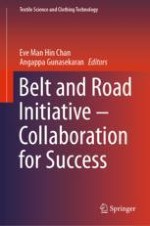2020 | OriginalPaper | Buchkapitel
Hong Kong’s “Super-Connector” Role in Managing Global Clothing Supply Chains Under the Belt and Road Initiative: An Extended Gravity Model Analysis
verfasst von : Chi Kuen Danny Ho, Eve Man Hin Chan, Angappa Gunasekaran, Tsz Leung Yip
Erschienen in: Belt and Road Initiative – Collaboration for Success
Verlag: Springer Singapore
Aktivieren Sie unsere intelligente Suche, um passende Fachinhalte oder Patente zu finden.
Wählen Sie Textabschnitte aus um mit Künstlicher Intelligenz passenden Patente zu finden. powered by
Markieren Sie Textabschnitte, um KI-gestützt weitere passende Inhalte zu finden. powered by
